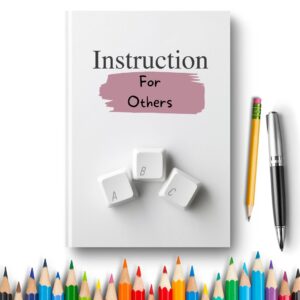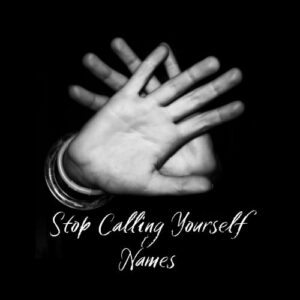What is overwhelm and where does it come from?
Give your brain a second to come up with an answer…
If you’re like most, you probably guessed it comes from things happening to you or maybe you figured it’s because of your to-do list or your kids or your partner.
Overwhelm is an emotion; a vibration in your body that gets activated by thoughts in your brain; conscious and unconscious.
With that in mind, I’m going to give a quick 3-step strategy I created to solve for overwhelm called TAP.
T = Thought
A = Ask better questions
P = Permission
T = Thought. Our brain generates 60-80,000 thoughts a day. It’s a veritable thought-generating machine. Most of them happen behind the scenes. This is efficiency at it’s finest. If we had to pay attention to every thought, we’d never get anything done. But sometimes the brain generates thoughts that are causing us unnecessary suffering, keeping us stuck and working against ourselves. This is when it’s helpful to slow things down and take a look inside. It’s also helpful to know that our brain runs in patters. It likes to keep thinking what it’s always thought and it likes to think the same thing under similar circumstances. That said, you likely have 3-5 top thoughts that habitually activate overwhelm. Identifying just one of them is enough, because working through that one will create a ripple effect with the others.
I’ll use myself as an example to bring this to life. I was recently invited to do a brief Facebook Live presentation to a large group of women entrepreneurs. If you’ve read any of my previous emails, you already know I’m historically averse to any form of public speaking. I’d experimented with the technology of doing an FB Live a while back, but got intimidated and overwhelmed (big surprise there!) so put it on the back burner. So this time I took a deep breath and a deeper dive to uncover one particularly stubborn thought driving my overwhelm. It was, “I don’t know how to do this.” Now this thought was clearly true. But just because a thought it true doesn’t make it useful and this one was most certainly not useful. It doesn’t take much investigation to uncover that we never know how to do something before we learn how to do it. But the fact that I kept indulging in looping on this thought was causing me to focus exclusively on what I didn’t know, making it unnecessarily threatening and holding me back from learning something new.
I consider overwhelm in the category of a Stalemate Emotion. These are emotions that feel necessary, but lock us into a no-win position with ourselves. Stalemate Emotions are often our go-to when we feel scared or upset, but they have a tendency to camp out and keep us from taking action.
Now, it’s not that this thought wasn’t true. Of course I didn’t know how to do something I’d never done before! But indulging in that habit of thinking was not useful because it caused me to feel overwhelm, which didn’t inspire me to take action and get creative.
Once you have the T part of the strategy, it’s time to move to the A-Step in the strategy, which is to ask a better question. This is a way of clarifying where you want to go and becoming more deliberate with a question like, “What do I want to think and feel in this situation? You only need to find the answer to one and that will lead you to answer the other.
For example, I knew I wanted to feel capable in the situation and once I knew the feeling, I could ask the follow up question of, “So in order to feel capable, what do I need to think? That helped me find a new thought that inspired feeling capable like, “I don’t need to know everything, I just need to have my own back.”
The last part of the strategy is P-Step, which stands for Permission. This helps you to become intentional by giving yourself permission to let go of overwhelm and feel something new on purpose. In my case, overwhelm felt protective and important, so giving myself permission to feel capable was helpful to mindfully acknowledging that it was ok to drop overwhelm.
Letting go of overwhelm is harmless, but your brain will give you push back on this because it often feels necessary. Giving yourself permission to feel something else will help it ease you into a new way to approach a situation without using force or control or aggression with yourself.



